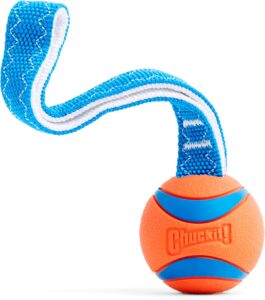
Choosing the right dog collar is an essential task for any pet owner. A collar is not just a tool for attaching a leash; it’s a critical component of your dog’s safety and identity. With numerous options available in the market, selecting the perfect collar can be overwhelming. This guide aims to simplify your decision-making process by exploring various types of collars, their purposes, and factors to consider when choosing one for your furry friend.
Understanding the Different Types of Dog Collars
Dog collars come in various shapes, sizes, and materials, each designed with specific purposes in mind. Understanding these differences is crucial in making an informed choice.
Flat Collars
Flat collars are the most common type of dog collar. They are ideal for daily wear and typically feature a buckle or a quick-release snap. These collars can be made from nylon, leather, or other durable materials and often have a ring to attach ID tags and leashes.
Martingale Collars
Martingale collars are designed for dogs that have a tendency to slip out of regular collars. They feature a limited closure that tightens slightly when pulled but does not choke the dog. This makes them a great choice for breeds with slender necks, like Greyhounds and Whippets.
Choke Chains
Choke chains are made of metal links and are designed to tighten around the dog’s neck when pulled. They are often used in training to correct a dog’s behavior. However, they must be used with caution, as improper use can lead to injury.
Prong Collars
Prong collars, also known as pinch collars, are designed to provide a more intense correction than choke chains. They are made of metal links with prongs that press into the dog’s neck when the collar is tightened. These collars should only be used under the guidance of a professional trainer.
Head Collars
Head collars, such as the Halti or Gentle Leader, fit around a dog’s muzzle and attach behind the ears. They give the handler more control over the dog’s head, making them useful for training and managing strong pullers. Head collars require proper introduction and training to ensure the dog’s comfort and acceptance.
Harnesses
While not technically collars, harnesses are a popular alternative for many dog owners. They distribute the pressure from the leash across the dog’s body, reducing strain on the neck. Harnesses are particularly beneficial for dogs with respiratory issues or those prone to pulling.
Factors to Consider When Choosing a Dog Collar
When selecting a dog collar, it’s important to consider several factors to ensure the safety and comfort of your pet.
Size and Fit
The collar should fit snugly but not too tight. You should be able to fit two fingers comfortably between the collar and your dog’s neck. Measure your dog’s neck and refer to size charts provided by manufacturers to ensure a proper fit.
Material
Dog collars are made from a variety of materials including nylon, leather, and metal. Each material has its advantages and disadvantages. Nylon is durable, lightweight, and available in various colors and patterns. Leather is long-lasting and often more comfortable for the dog, but it can be more expensive. Metal chains are strong but can be harsh on the dog’s skin if not used properly.
Purpose
Consider the primary purpose of the collar. Is it for everyday use, training, or identification? Different collars serve different functions, and choosing the right one depends on your specific needs.
Safety Features
Look for collars with safety features such as breakaway buckles or reflective materials. These can prevent accidents and enhance visibility during nighttime walks.
Durability
Consider the durability of the collar, especially if your dog is active or loves to play outdoors. A high-quality collar will withstand wear and tear and last for a long time.
Fitting the Collar Correctly
Once you have selected the right collar, it’s crucial to fit it properly to ensure your dog’s comfort and safety.
Adjust the Collar
Adjust the collar so that it fits snugly but allows enough room for two fingers to fit between the collar and your dog’s neck. This ensures that the collar is secure but not too tight.
Check for Comfort
Observe your dog’s reaction to the collar. If they seem uncomfortable or try to remove it, the collar may be too tight or the wrong type for your dog. Adjust as necessary or consider a different style.
Regularly Inspect the Collar
Check the collar regularly for signs of wear or damage. Replace it if it becomes frayed or if the buckle is not functioning correctly.
Special Considerations for Puppies
When choosing a collar for a puppy, there are additional factors to consider.
Growth
Puppies grow quickly, so choose a collar that can be easily adjusted or replaced as your puppy grows. Consider investing in an adjustable collar that can accommodate their changing size.
Training
Puppies require training, and a collar can be an essential tool in this process. Consider using a flat collar or a martingale collar for training, as these provide gentle control without causing discomfort.
Comfort
Puppies are naturally curious and energetic, so choose a collar that is lightweight and comfortable to wear. Avoid heavy or restrictive collars that may hinder their movement or cause discomfort.
Conclusion
Choosing the perfect dog collar involves understanding the different types available and considering factors such as size, material, and purpose. Whether you have a playful puppy or a seasoned companion, the right collar will ensure their safety, comfort, and style. Regularly check the fit and condition of the collar to ensure it remains suitable for your dog’s needs. With the right collar, you and your furry friend can enjoy countless adventures together, knowing they are secure and comfortable.
#ChatGPT assisted in the creation of this article.








